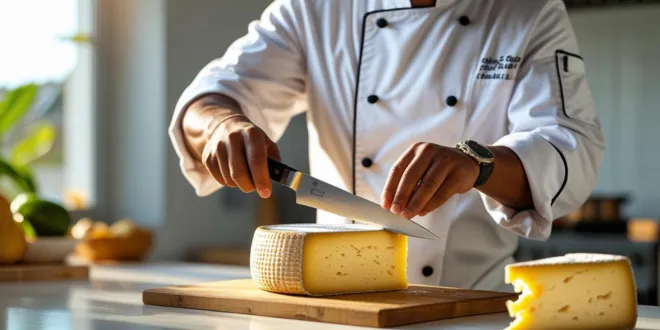Few things represent French culinary artistry quite like cheese. With over a thousand varieties crafted across rolling countryside, mountain dairies, and coastal farms, French cheese is a world of flavor, texture, and tradition.
But if you’re new to this delicious universe, the sheer variety can feel overwhelming. Where do you start? What makes one cheese different from another? And perhaps most importantly — how to eat French cheese the right way?
This guide is your perfect starting point. Whether you’re planning a gourmet picnic, hosting a dinner party, or simply exploring new tastes, we’ll walk you through everything you need to know.
From creamy delights to bold blues, we’ll help you navigate the rich landscape of French fromage with confidence and curiosity.
One of the first questions newcomers ask is: What is the most popular French cheese?
While the answer may vary by region and palate, names like Brie, Camembert, and Roquefort come up again and again. Speaking of which — have you ever wondered about the real difference between Brie and Camembert?
A Beginner’s Guide to French Cheese In “Brie vs Camembert: What’s the Difference for Newcomers?”, we’ll break down their origins, textures, and flavors so you can tell them apart at a taste.
We’ll also simplify the basics in “Soft, Hard, or Blue? Types of French Cheese Explained Simply”, helping you understand the categories that define French cheese.
Plus, you’ll discover the Top 10 French Cheeses Every Beginner Should Try — a curated list of approachable, delicious options to kick off your tasting journey.
And don’t worry about pronunciation — even if you’ve been silently dreading saying “Reblochon” or “Munster,” our Ultimate Guide to Pronouncing French Cheese Names Correctly will have you speaking like a local in no time.
Finally, learn how to impress your guests with a beautifully arranged French Cheese Board 101: How to Assemble Like a Pro.
Welcome to the wonderful world of French cheese — let the tasting begin!
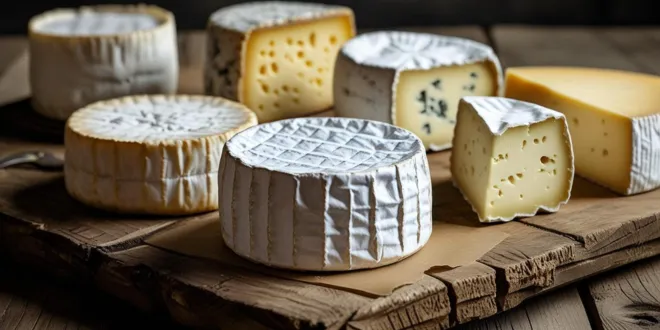
A Beginner’s Guide to French Cheese
French cheese is more than just food — it’s a celebration of tradition, terroir, and craftsmanship. With over 1,000 varieties, France offers an incredible range of flavors, textures, and aromas that can feel overwhelming to newcomers.
But fear not: this Beginner’s Guide to French Cheese is here to make your journey delicious and stress-free. From creamy Brie to bold blue Roquefort, each cheese tells a story of its region, milk type, and aging process.
In this guide, you’ll learn how to identify major types, serve them properly, and even pronounce their names like a local. We’ll cover the Top 10 French Cheeses Every Beginner Should Try, help you understand what is the most popular French cheese, and explain the differences between soft, hard, and blue varieties.
You’ll also discover how to build a stunning French cheese board and enjoy cheese the French way — with wine, bread, and good company.
Whether you’re shopping at a local gourmet store or planning a tasting night, this guide gives you the confidence to explore French fromage step by step.
No need to be intimidated by the rind or the smell — some of the most flavorful cheeses look (and smell!) the most daring. So relax, taste mindfully, and let your palate travel through the rolling hills of Normandy, the mountains of the Alps, and the pastures of Auvergne. Welcome to one of the world’s greatest culinary traditions.
Top 10 French Cheeses Every Beginner Should Try
- Brie de Meaux
- Camembert de Normandie
- Comté
- Chèvre (Goat Cheese)
- Reblochon
- Roquefort
- Munster
- Cantal
- Saint-Nectaire
- Époisses
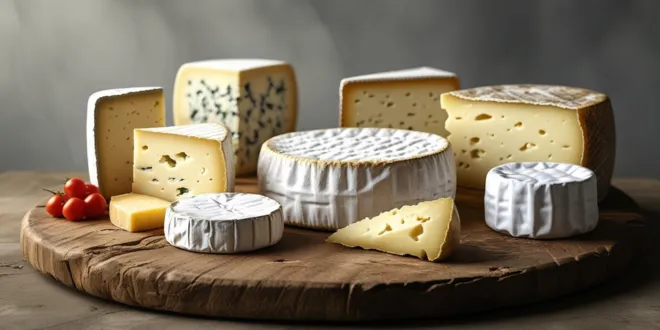
What Is the Most Popular French Cheese?
When it comes to popularity, Brie is often crowned the most famous French cheese worldwide. Known as the “King of Cheeses,” Brie de Meaux — a protected AOC variety — is beloved for its pale, creamy interior and soft, edible rind. Its mild, buttery flavor makes it accessible even to those new to strong cheeses.
Brie originated in northern France and has been enjoyed since the Middle Ages, even favored by French royalty. While Camembert is a close rival in fame, Brie tends to be milder and richer, often served at celebrations and gatherings. However, popularity can vary by region: in France, Comté is the most consumed cheese by volume, thanks to its versatility and widespread production.
Meanwhile, Roquefort holds a special place as France’s most iconic blue cheese. So while Brie may win in global recognition, the “most popular” title depends on context — taste, tradition, or consumption.
For beginners, starting with Brie offers a gentle, elegant entry into French cheese culture. It pairs beautifully with fruit, nuts, and Champagne, making it a staple on cheese boards across the world.
Ultimately, Brie’s combination of history, flavor, and elegance solidifies its status as the most popular French cheese for newcomers and connoisseurs alike.
How to Eat French Cheese
Eating French cheese the right way enhances its flavor and honors French tradition. First, always serve cheese at room temperature — take it out of the fridge 30–60 minutes before serving so aromas and textures fully develop.
Start with mild cheeses like Brie or goat cheese, then move to stronger ones like blue or washed-rind varieties. Use a separate knife for each cheese to avoid mixing flavors.
The rind is usually edible — especially on bloomy-rind cheeses like Brie and Camembert — and often adds depth of flavor. Cut cheese properly: slice soft cheeses like a pie, cut hard cheeses into thin wedges, and crumble blue cheeses.
Pair with plain baguette, crackers, fresh fruit (like grapes or apples), nuts, and honey. Avoid strong condiments that overpower the taste.
Wine is a classic companion: pair Brie with Champagne, Comté with white Burgundy, and Roquefort with Sauternes. In France, cheese often comes after the main course and before dessert — not as an appetizer.
Don’t rush; savor each variety slowly. And remember: there’s no strict rulebook. The best way to eat French cheese is with curiosity, respect, and enjoyment. Whether you’re tasting solo or sharing with friends, let each bite take you on a journey through France’s rich dairy heritage.
Soft, Hard, or Blue? Types of French Cheese Explained Simply
French cheese comes in many forms, but most can be grouped into three main categories: soft, hard, and blue — with goat cheese (chèvre) often considered a fourth. Soft cheeses, like Brie and Camembert, have high moisture, creamy interiors, and edible rinds.
They’re aged briefly (2–8 weeks) and best enjoyed young and spreadable. Hard cheeses, such as Comté and Cantal, are pressed and aged for months or even years.
They develop firm textures and complex, nutty, or caramel-like flavors. These are great for slicing, grating, or pairing with wine. Blue cheeses, like Roquefort or Bleu d’Auvergne, are veined with mold (Penicillium), giving them a bold, tangy, sometimes salty taste.
They’re made by piercing the cheese to allow air in, encouraging mold growth. Goat cheese (chèvre) varies from fresh and tangy logs to aged, firm rounds.
It’s often bright white and ranges from mild to sharp. Each type reflects its region’s climate, milk source (cow, goat, sheep), and tradition. Understanding these categories helps you explore confidently.
Start with soft or goat cheeses if you prefer mild flavors, then gradually try hard and blue varieties. This simple framework — soft, hard, blue, and chèvre — makes navigating France’s 1,000+ cheeses much easier and far more enjoyable.
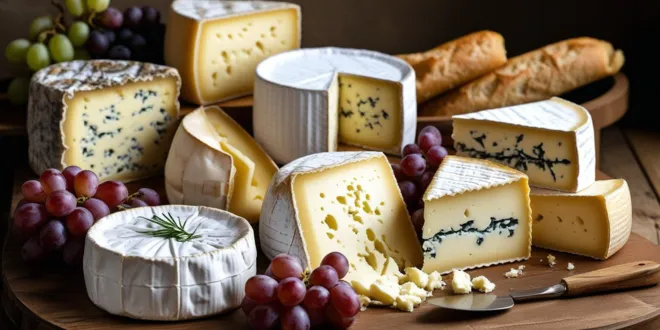
French Cheese Board 101: How to Assemble Like a Pro
Creating a French cheese board is an art — but it’s easy to master. Start with 3 to 5 cheeses representing different textures: one soft (like Brie), one hard (like Comté), one blue (like Roquefort), and optionally, a chèvre. Choose varied milk types (cow, goat, sheep) for diversity.
Let cheeses sit at room temperature for 30–60 minutes before serving to unlock their full flavor. Arrange them from mildest to strongest, left to right.
Use a wooden board or slate platter and label each cheese if serving guests. Add accompaniments: fresh fruit (grapes, figs), dried fruit (apricots, dates), nuts (walnuts, almonds), honey, and cornichons.
Include a plain baguette and water crackers so the cheese remains the star. Use a separate knife for each cheese to avoid flavor mixing. Pair with wine — Champagne for soft cheeses, red Burgundy for hard, and sweet Sauternes for blue.
Keep portions modest: about 1–2 oz per cheese per person. Garnish with fresh herbs like thyme or rosemary for a rustic touch. Avoid strong spreads or flavored dips that overpower the cheese.
The goal is balance, elegance, and taste. A well-assembled French cheese board isn’t just food — it’s an experience. With these tips, you’ll serve a board that looks beautiful, tastes incredible, and impresses like a true fromage pro.
The Ultimate Guide to Pronouncing French Cheese Names Correctly
- Brie: /briː/ – “bree” (not “brye”)
- Camembert: /ˌkæm.əmˈbɛər/ – “kam-uhm-bair” (the “t” is silent)
- Roquefort: /ˈrɒk.fɔːr/ – “rock-fort” (not “rock-fort-tee”)
- Comté: /kɔ̃.te/ – “kohn-tay” (nasal “on” sound)
- Reblochon: /ʁə.blɔ.ʃɔ̃/ – “ruh-bloh-shon”
- Époisses: /e.pwas/ – “ay-pwahs”
- Munster: /mœ̃.stɛʁ/ – “muhn-ster” (not the German “Munster”)
- Chèvre: /ʃɛvʁ/ – “sh-ev-ruh” (not “shev-reh”)
- Pont-l’Évêque: /pɔ̃.le.ˈvɛk/ – “pohn-leh-vek”
- Cantal: /kɑ̃.tal/ – “kahn-tal”
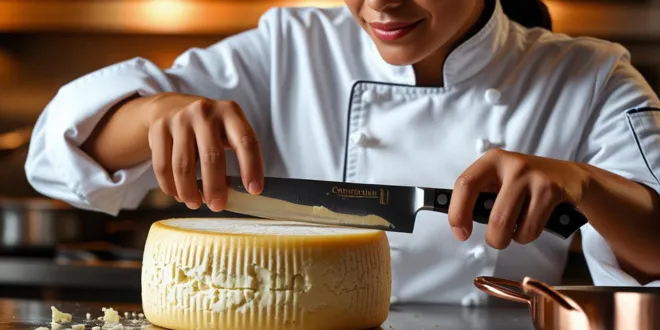
Conclusion
Congratulations — you’ve just taken your first delicious steps into the rich and flavorful world of French cheese. With this Beginner’s Guide to French Cheese, you now have the knowledge and confidence to explore one of France’s greatest culinary treasures without feeling overwhelmed.
From learning how to eat French cheese the traditional way — at room temperature, in the right order, and paired with the perfect bread or wine — to understanding the basics in “Soft, Hard, or Blue? Types of French Cheese Explained Simply”, you’re well on your way to becoming a true fromage enthusiast. You’ve also discovered answers to common questions like what is the most popular French cheese? Spoiler: it often comes down to classics like Brie, Camembert, or Roquefort — each with its own loyal following.
We hope you’re now excited to try the Top 10 French Cheeses Every Beginner Should Try, from the creamy indulgence of Brie de Meaux to the bold bite of a well-aged Comté. And if you’ve ever been confused about Brie vs Camembert: What’s the Difference for Newcomers?, you now know it’s not just about taste — it’s terroir, texture, and tradition.
Don’t forget the fun part: sharing your discoveries! With French Cheese Board 101: How to Assemble Like a Pro, you can create a stunning spread that impresses friends and elevates any occasion — whether it’s a casual get-together or a sophisticated dinner.
And yes, even if French pronunciation once seemed intimidating, The Ultimate Guide to Pronouncing French Cheese Names Correctly has given you the tools to say “Pont-l’Évêque” or “Époisses” with confidence (and maybe even a little flair).
French cheese isn’t just food — it’s culture, history, and craftsmanship on a plate. Every bite tells a story. So keep tasting, keep exploring, and most importantly, enjoy every moment of your cheese journey. Bon appétit!
Frequently asked questions
1. What is the most popular French cheese?
Brie is often considered the most popular French cheese worldwide. Known as the “King of Cheeses,” this soft, creamy, bloomy-rind cheese originates from northern France.
Its mild, buttery flavor makes it ideal for beginners. Camembert is a close second. Both are staples on cheese boards and beloved for their approachable taste and elegant melt-in-the-mouth texture.
2. What are the 4 main types of French cheese?
The four main types of French cheese are: soft (like Brie and Camembert), semi-soft (such as Munster), hard (like Comté and Cantal), and blue (including Roquefort and Bleu d’Auvergne). Some classifications also include goat cheese (chèvre) as a fifth category. Each type varies in texture, aging time, and flavor, reflecting France’s diverse regional traditions and terroir.
3. How do I start eating French cheese as a beginner?
Start by trying mild, creamy cheeses like Brie or fresh goat cheese. Serve them at room temperature for the best flavor. Begin with one or two varieties, and pair with plain bread, fruit, or honey. Avoid strong blues at first. Taste from mild to strong, and don’t eat the rind if you’re unsure — though most are edible and add flavor.
4. What is the difference between Brie and Camembert?
Brie and Camembert are both soft, bloomy-rind cheeses, but Brie is milder, creamier, and larger in wheel size, originating from Île-de-France.
Camembert, from Normandy, has a denser texture, earthier flavor, and smaller round shape. Brie often contains more butterfat, while Camembert ripens more evenly from the center. The differences are subtle but noticeable to experienced tasters.
5. How should I serve a French cheese board?
Serve 3–5 cheeses of varying types: soft, hard, blue, and goat. Let them sit at room temperature for 30–60 minutes before serving. Arrange from mildest to strongest. Include baguette, crackers, fresh fruit, nuts, and honey.
Use separate knives for each cheese. Add charcuterie if desired. Keep portions small to encourage tasting without waste.
6. What wine pairs well with French cheese?
Soft cheeses like Brie pair well with Champagne or Chardonnay. Camembert goes beautifully with a light Pinot Noir. Hard cheeses like Comté match well with white Bordeaux or Côtes du Rhône.
Blue cheeses like Roquefort are classic with sweet Sauternes or Port. Goat cheese loves a crisp Sauvignon Blanc. The key is balancing intensity — bold cheeses need bold wines, while mild ones shine with lighter, acidic wines.
7. How do you pronounce common French cheese names?
- Brie: /briː/ (bree)
- Camembert: /ˌkæm.əmˈbɛər/ (kam-uhm-bair)
- Roquefort: /ˈrɒk.fɔːr/ (rock-fort)
- Comté: /kɔ̃.te/ (kohn-tay)
- Reblochon: /ʁə.blɔ.ʃɔ̃/ (ruh-bleu-shon)
- Époisses: /e.pwas/ (ay-pwahs)
- Munster: /mœ̃.stɛʁ/ (muhn-ster)
- Chèvre: /ʃɛvʁ/ (sh-ev-ruh)
8. Which French cheeses are safe to eat during pregnancy?
Pregnant women should avoid soft, unpasteurized cheeses like Brie, Camembert, and blue-veined varieties due to listeria risk.
Safe options include hard cheeses like Comté, Beaufort, and aged Cheddar — even if made from raw milk, as the aging process reduces bacteria. Always check labels for “pasteurized milk.” Cooked cheeses (like in tartiflette) are also safe. Consult your doctor when unsure.
9. What are the top 10 French cheeses to try?
Beginners should try: Brie, Camembert, Comté, Roquefort, Chèvre, Reblochon, Époisses, Cantal, Munster, and Saint-Nectaire. These represent France’s diversity — from creamy and mild to bold and pungent.
Each offers a unique taste of regional craftsmanship. Start with milder ones like Brie and Comté, then explore stronger flavors like Époisses or Roquefort as your palate develops.
10. Why is French cheese so famous?
French cheese is famous for its diversity, tradition, and terroir. With over 1,000 varieties, each region produces unique cheeses shaped by local climate, milk, and methods.
France protects its heritage with AOC/AOP labels ensuring authenticity. Artisanal craftsmanship, centuries of expertise, and cultural pride make French cheese a global symbol of gastronomy and slow food excellence.

